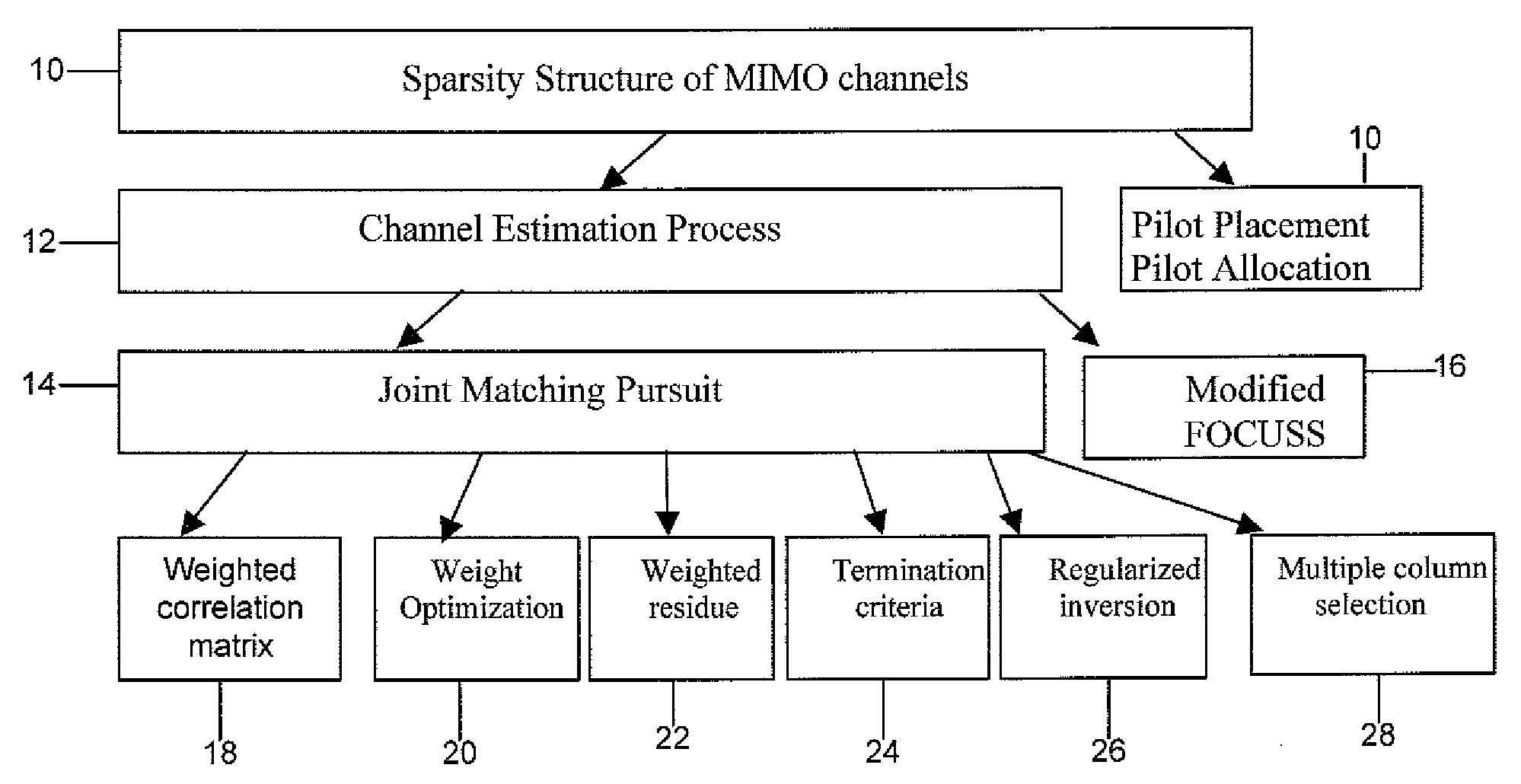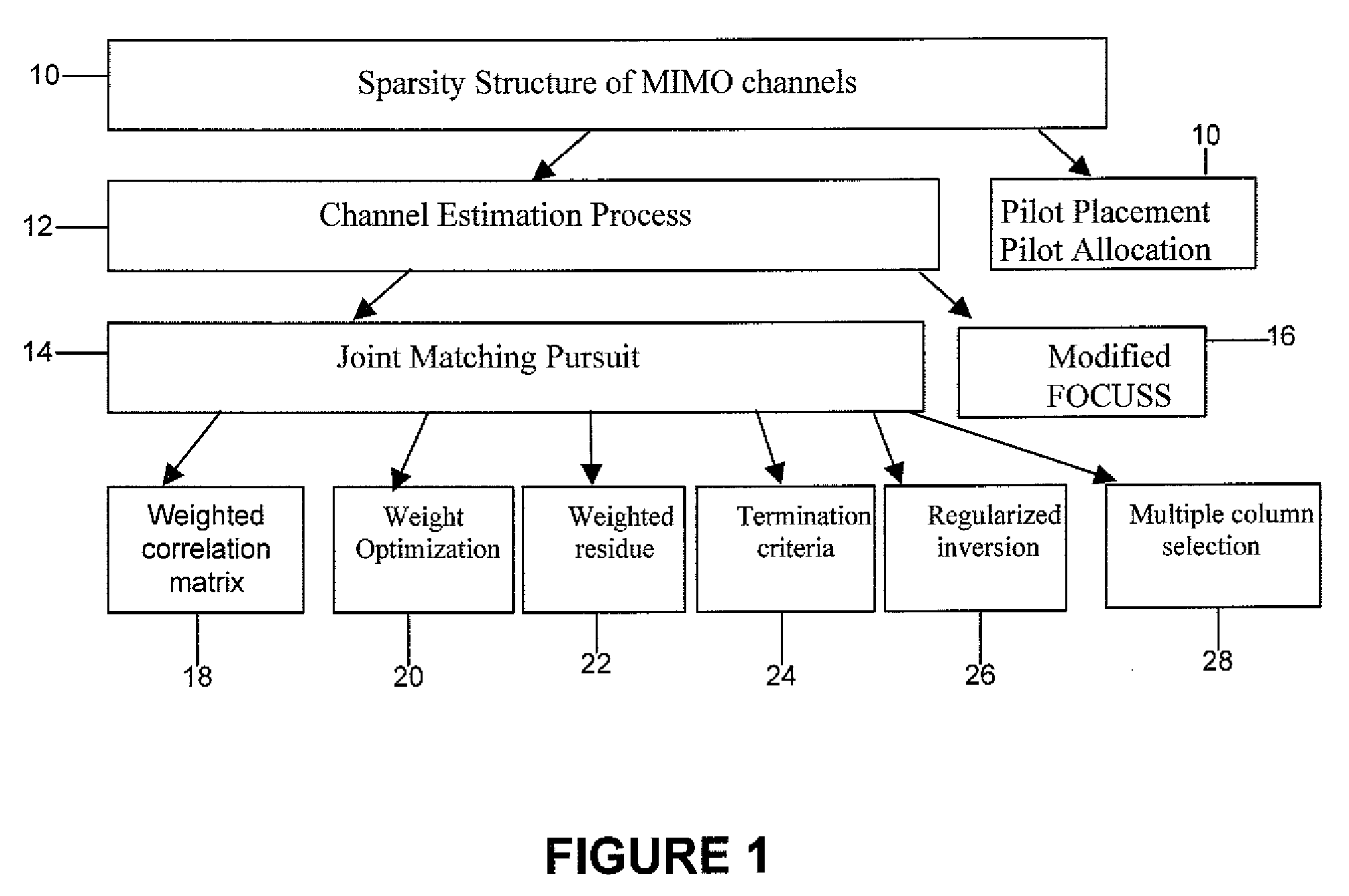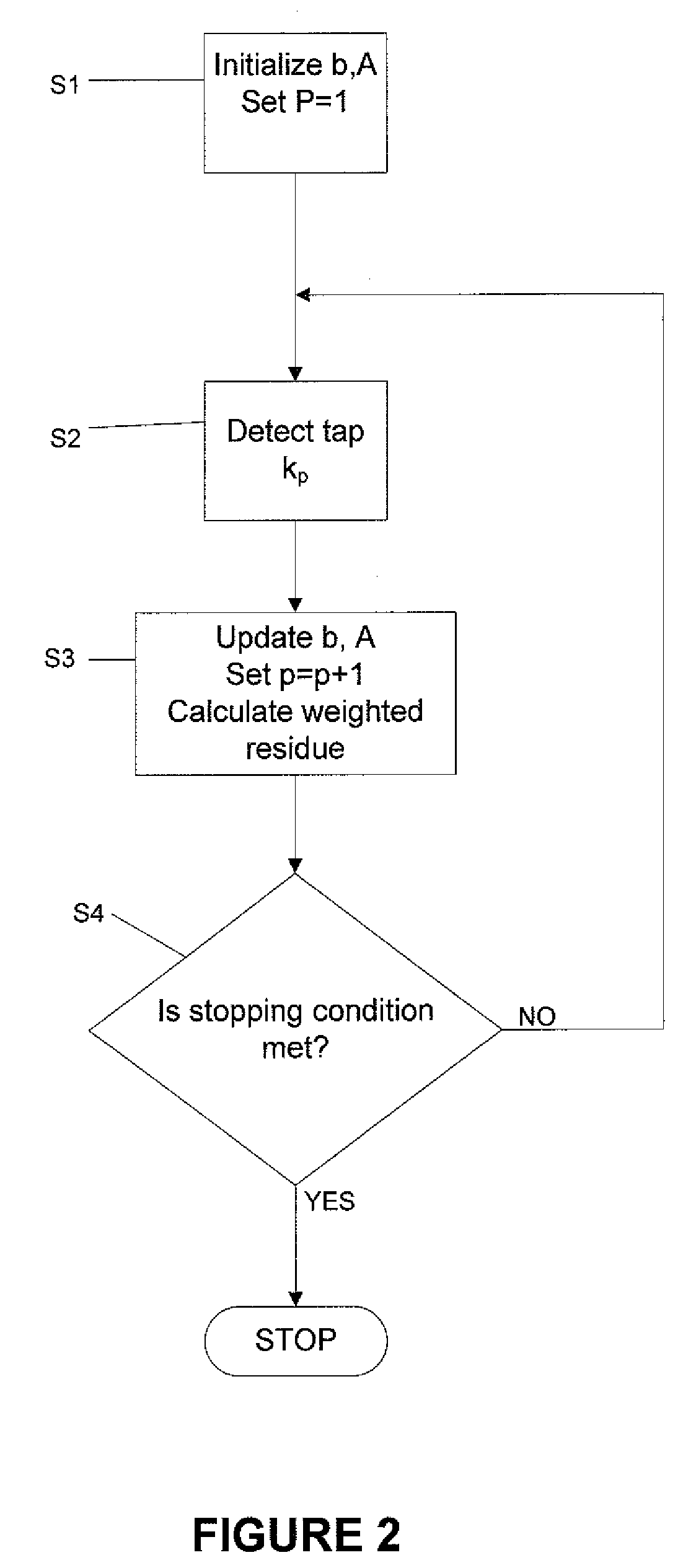Sparse Channel Estimation for MIMO OFDM Systems
a channel estimation and mimo technology, applied in the field of mimo orthogonal frequency distribution multiplex (ofdm) system channel estimation, can solve the problems of overhead sending pilots, and the problem becomes even more challenging with multiple antenna system, and achieves fast operation, no significant performance loss, and the effect of sparse signal recovery results
- Summary
- Abstract
- Description
- Claims
- Application Information
AI Technical Summary
Benefits of technology
Problems solved by technology
Method used
Image
Examples
Embodiment Construction
[0033]The present invention advantageously provides a method for obtaining necessary and sufficient conditions determining the minimum number of pilots required for perfect channel recovery in an ideal system, where there is no noise at the receivers. The result provides guidelines for optimal pilot allocation and placement at the transmit antennas. Pilot allocation refers to how the pilots are allocated to different transmit antennas. Pilot placement refers to the selection of subcarriers that will carry the pilots. An exemplary embodiment of the invention includes a new weighted orthogonal matching pursuit (OMP) algorithm that exploits the aforementioned properties of the MIMO channel.
[0034]The following properties of the multipath MIMO channel can be exploited. One such property is that the channel between any pair of transmit and receive antennas has at most T taps, and T / L is relatively small, where L is the maximum delay of spread. Another property is that the positions of the...
PUM
 Login to View More
Login to View More Abstract
Description
Claims
Application Information
 Login to View More
Login to View More - R&D
- Intellectual Property
- Life Sciences
- Materials
- Tech Scout
- Unparalleled Data Quality
- Higher Quality Content
- 60% Fewer Hallucinations
Browse by: Latest US Patents, China's latest patents, Technical Efficacy Thesaurus, Application Domain, Technology Topic, Popular Technical Reports.
© 2025 PatSnap. All rights reserved.Legal|Privacy policy|Modern Slavery Act Transparency Statement|Sitemap|About US| Contact US: help@patsnap.com



